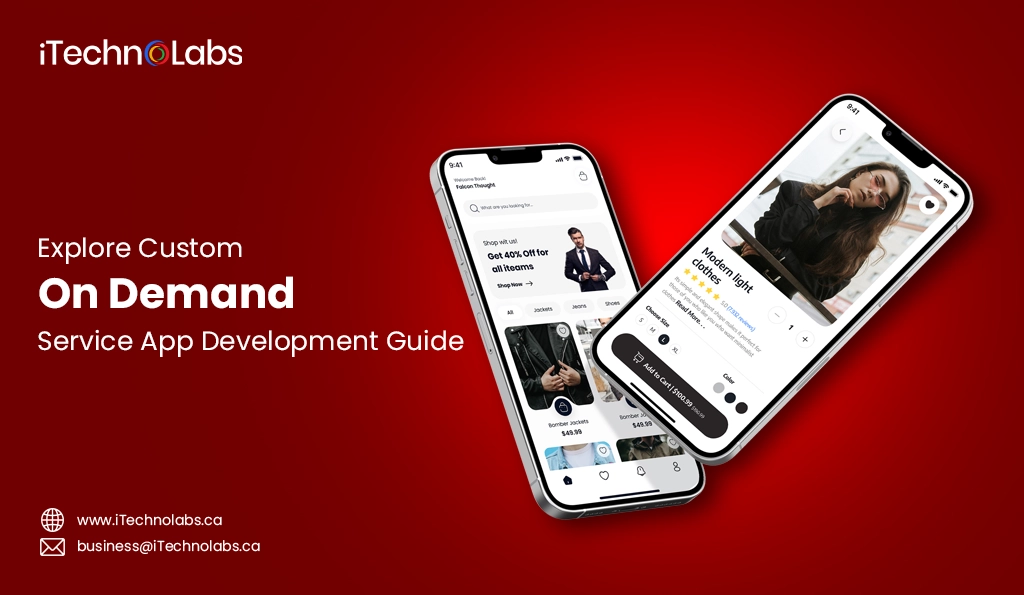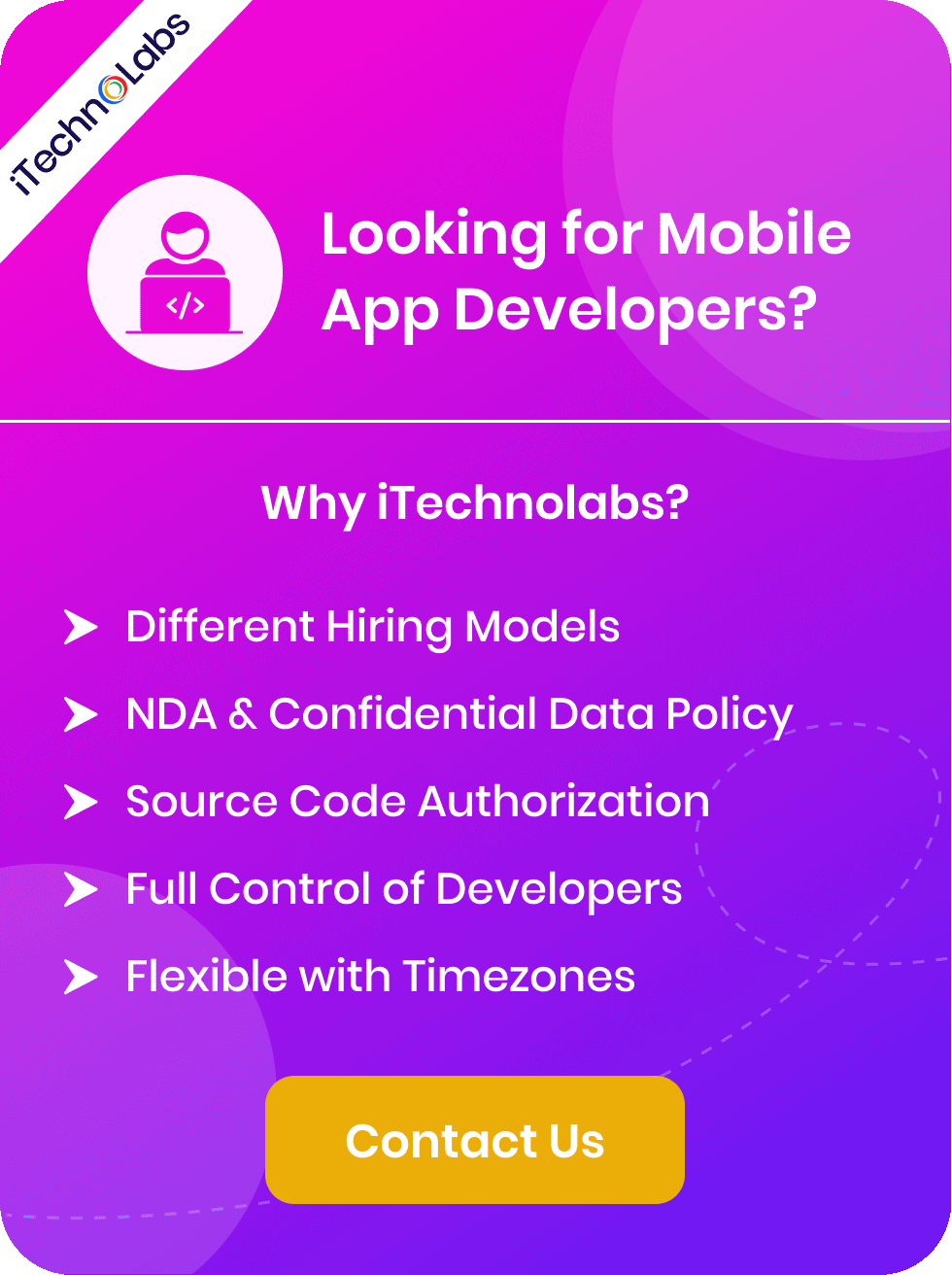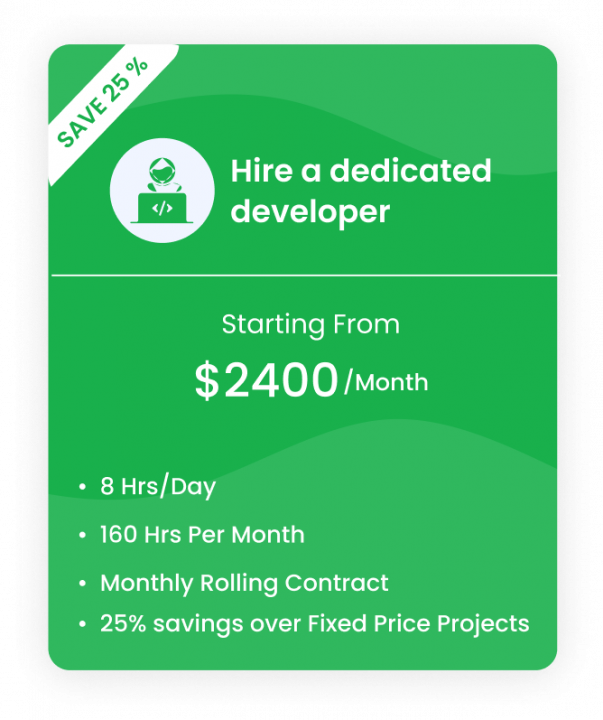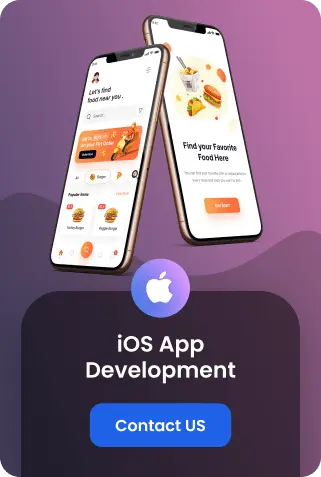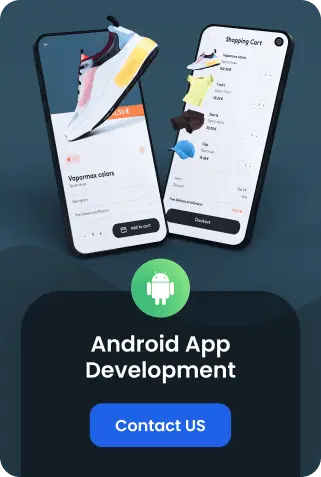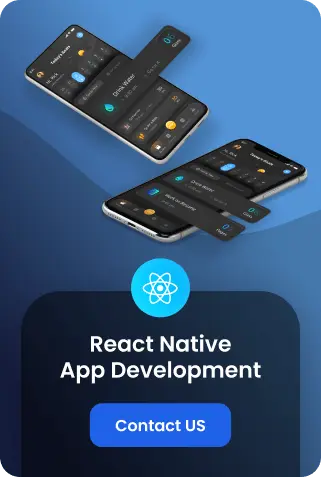As technology relentlessly advances, an ever-growing number of people are turning to on-demand services to fulfill their daily needs, a trend that is rapidly becoming the backbone of modern convenience. This movement encompasses a broad spectrum of services, extending beyond the commonly thought-of realms of food delivery and transportation, to include personal shopping and even on-demand home services like cleaning and repairs. The unparalleled convenience of accessing these diverse services through a few simple taps on a smartphone or other digital devices has not only shifted but revolutionized consumer expectations. On-demand solutions have swiftly emerged as the new benchmark for contemporary living, seamlessly blending into the fabric of our daily lives.
In direct response to this escalating trend, there has been a noticeable and significant surge in the demand for custom on demand service app development. Businesses across sectors are eager to tap into this lucrative opportunity by devising tailored solutions that precisely cater to the unique needs and preferences of their customers. By offering such bespoke services, companies aim to deliver a seamless and efficient service experience that stands out in a crowded market. This strategic move towards personalized, on-demand services is not merely a response to consumer demand but a forward-thinking approach to business. It is reshaping the operational and customer interaction models of companies, underscoring the critical importance of adaptability, flexibility, and innovation in the rapidly evolving digital era.
Moreover, the shift towards these customized on-demand services signifies a deeper transformation within the economy and society, reflecting changing lifestyles, work patterns, and a collective move towards a more connected and digitally integrated world. As businesses continue to explore and expand these services, they are not only meeting the immediate needs of their customers but are also setting new standards for convenience, efficiency, and personalization in the digital age, paving the way for a future where on-demand services could become as ubiquitous and essential as the internet itself.
What is an On-Demand App?
An on-demand app is a digital platform that connects customers with service providers in real-time, enabling them to request and receive personalized services whenever and wherever they need them. These apps serve as intermediaries between businesses and consumers, facilitating the seamless delivery of goods or services at the touch of a button. From ride-hailing and food delivery to house cleaning and healthcare, on-demand apps are revolutionizing the way we access and consume services, creating a more efficient and user-centric experience for both businesses and customers.
Also Read: Understanding the Doctor On-Demand App Development Cost
Types of On-Demand Service Apps Based on Industry
| Industry | Examples of On-Demand Apps |
| Ride-hailing | Uber, Lyft |
| Food Delivery | DoorDash, Uber Eats, Grubhub |
| Healthcare | Teladoc, Zocdoc |
| Home Services | TaskRabbit, Handy |
| Professional Services | Upwork, Fiverr |
| Grocery Delivery | Instacart, Amazon Fresh |
| Beauty and Wellness | Glamsquad, Urban |
| Entertainment | Netflix, Hulu |
| Fitness | ClassPass, Peloton |
| Pet Care | Rover, Wag! |
How Does On-Demand Apps Work?
On-demand apps work by connecting businesses or service providers with consumers in need of their services. The process typically involves three parties: the customer, the service provider, and the app platform.
- Customer: A user in need of a specific service will open the on-demand app and browse through available options. They can select their desired service, specify their location and other preferences, and make a payment through the app.
- Service Provider: Once a customer books a service, the on-demand app will notify nearby service providers who have registered on the platform. The service provider can then choose to accept or decline the request based on their availability and location.
- App Platform: The on-demand app acts as a middleman, facilitating communication and transactions between the customer and service provider. The platform also ensures quality control by vetting service providers and providing ratings and reviews for customers to use as reference.
How On-Demand App Benefits to Business?
On-demand apps have become increasingly popular among businesses due to the numerous benefits they offer. Some of these benefits include:
Flexibility –
On-demand apps offer a transformative approach for businesses, allowing them to operate according to their own timetable. This innovation not only accommodates the diverse needs of customers but also caters to the schedules of service providers, ensuring a seamless match between supply and demand. The inherent flexibility of on-demand services leads to heightened customer satisfaction by delivering services exactly when and where they are needed, which in turn fosters greater loyalty and significantly higher retention rates among users.
Increased User-Base –
As on-demand apps continue to gain popularity, businesses that incorporate them into their model stand to attract a larger user-base. With more and more customers relying on on-demand services for convenience and efficiency, businesses that offer such services can tap into this growing market and expand their reach.
Data Management & Storage –
On-demand apps also generate a vast amount of data that can be utilized to gain valuable insights into customer behavior and preferences. This data can help businesses make informed decisions to improve their services, tailor their offerings, and target specific demographics more effectively.
Customer Satisfaction –
The primary goal of on-demand apps is to provide customers with quick and convenient access to services, ultimately leading to higher levels of satisfaction. This customer-centric approach can significantly improve the overall experience for users and help create a positive brand image for businesses.
High Scalability –
On-demand apps are designed to be highly scalable, meaning they can easily accommodate a growing customer base without compromising on service quality. This makes it easier for businesses to expand their services and reach new markets without the need for significant investments in infrastructure.
Competitive Edge –
Incorporating on-demand apps into a business model is not just a trend; it’s a strategic move that can provide companies with a significant competitive advantage over their competitors. These apps offer a platform for providing customers with convenient, efficient, and highly personalized services at the tap of a finger. By aligning their services with consumer demands for speed and customization, businesses can distinguish themselves from others in the crowded marketplace. This differentiation is crucial in attracting and retaining a larger user base, as customers increasingly value the ability to obtain what they need quickly and with minimal effort. Furthermore, on-demand apps can help businesses gather valuable data on customer preferences and behavior, enabling them to tailor their offerings more precisely and improve customer satisfaction over time.
On-Demand App Development Process
The development process of an on-demand app typically involves the following steps:
- Define Purpose and Goals –The initial phase in developing an on-demand app involves a thorough identification of its purpose and objectives. This critical step requires a deep dive into understanding the target audience, pinpointing their specific needs, preferences, and challenges. It’s crucial to discern how the app can effectively meet these needs, offering solutions that are not only practical but also highly valued by the users. This process lays the foundation for creating an app that is not only relevant but also highly sought after in the marketplace.
- Select Mobile App Development Platform – The next step in the app development process involves selecting the most suitable platform, which requires careful consideration of various factors. These include understanding the needs and preferences of the target audience, aligning with the allocated budget, and meeting specific technical requirements. For on-demand app development, the choice of platform plays a crucial role in determining the app’s reach and functionality. Popular platforms include iOS and Android, which dominate the market and cater to specific user demographics. Additionally, cross-platform options such as React Native or Flutter offer the flexibility to develop apps that run seamlessly across multiple operating systems, thereby broadening the app’s potential user base and optimizing development resources.
- Find On-Demand App Development Company – Partnering with an experienced and proficient on-demand app development company is vital for the success of any project. This step involves extensive research to identify a reputable company that has a proven track record in developing similar apps, possesses the necessary technical expertise, and offers competitive pricing plans. A reliable development company will provide valuable insights and guidance throughout the entire app development process, ensuring that the end product meets all quality standards and is delivered within the stipulated time frame.
- Design & Build On-Demand App – The design and development phase is where the actual app creation takes place. It involves transforming the concept into a fully functional and visually appealing on-demand app. This stage requires collaboration between designers, developers, and project managers to ensure that the app’s features and user interface align with the intended vision. The process typically includes wireframing, prototyping, coding, testing, and refining until the final product is ready for launch.
- Test and Launch – Testing the app for functionality, usability, and compatibility across various devices and operating systems is crucial to its success. This step involves rigorous quality assurance testing by the development team to identify and fix any bugs, glitches, or performance issues. Once all issues are resolved, the app is ready for launch on the desired platforms such as Apple App Store and Google Play Store.
Read More: Cost Estimation for Creating an On-demand Truck Rental App like Bungii
Technologies Used to Develop On-Demand Mobile App
| Technology Type | Examples |
| Frontend Development | HTML, CSS, JavaScript, Swift (for iOS), Kotlin (for Android) |
| Backend Development | Node.js, Ruby on Rails, .NET, Python |
| Mobile App Frameworks | React Native, Flutter, Xamarin |
| Cloud Storage | Amazon S3, Google Cloud Storage |
| Database Management | MySQL, PostgreSQL, MongoDB, Firebase |
| API Services | RESTful APIs, GraphQL |
| DevOps Tools | Docker, Jenkins, GitHub Actions, Kubernetes |
| Analytics and Monitoring | Google Analytics, Crashlytics, Prometheus |
| Payment Gateways | Stripe, PayPal, Braintree |
| Push Notifications | Firebase Cloud Messaging, OneSignal |
Cost to Build On-Demand App
The cost to build an on-demand mobile app can vary significantly depending on various factors such as the complexity of features, platform (iOS, Android, or both), development team rates, and more. On average, a basic on-demand app can start from $20,000 to $50,000 for a single platform. The cost can go up to $100,000 or more for a complex app with advanced features and functionalities. It is essential to consider the ongoing maintenance and updates cost as well while budgeting for an on-demand app.
| Development Phase | Feature Complexity | Cost Range (USD) |
| Idea Validation | – | 1,000 – 5,000 |
| UI/UX Design | Simple | 5,000 – 15,000 |
| Complex | 15,000 – 30,000 | |
| Frontend Development | Simple | 10,000 – 25,000 |
| Complex | 25,000 – 50,000 | |
| Backend Development | Simple | 10,000 – 20,000 |
| Complex | 20,000 – 40,000 | |
| API Integration | Moderate | 5,000 – 15,000 |
| Extensive | 15,000 – 25,000 | |
| Testing & Deployment | 5,000 – 10,000 | |
| Marketing & Launch | Initial | 5,000 – 20,000 |
| Ongoing Maintenance | Monthly | 1,000 – 5,000/month |
MVP Features of On-Demand Apps
An on-demand app is a platform that connects users with service providers or businesses for services or products in real-time. The essential features of an on-demand app include:
- Booking or Ordering: This feature enables users to conveniently book or order services and products directly through the app, enhancing the overall user experience by providing a seamless and efficient process for making purchases or reservations without the need to leave the app or use external websites.
- Push Notification: This feature allows businesses or service providers to send updates, reminders, and promotions to their customers in real-time. It also enhances user engagement and helps keep them informed about new services, products, or deals.
- In-App Payments: This feature allows users to make secure and convenient payments directly through the app, eliminating the need for cash or card transactions. It also provides a seamless and hassle-free payment experience for users.
- Real-Time Location Tracking: This feature enables users to track their service providers’ or delivery persons’ location in real-time, providing them with an estimated time of arrival and enhancing transparency and trust between the user and the service provider.
- Ratings & Reviews: This feature allows users to rate and provide feedback on their experience with a particular service or product. It helps businesses improve their services and also provides valuable information for other users making decisions on which service provider to choose.
Advanced Features of On-Demand Apps
In addition to the essential features mentioned above, on-demand apps can also incorporate advanced features that further enhance user experience and increase customer loyalty. Some of these features include:
- Wish List / Favorites: This innovative feature empowers users by allowing them to bookmark their favorite services or products for quick and effortless access at a later time. This functionality is not only convenient for users but also offers a significant advantage to businesses. It enables companies to tailor their marketing efforts more effectively by targeting specific promotions or deals directly to potential customers, based on the items they have saved in their wish list. This strategic approach enhances the user experience and increases the likelihood of converting interest into sales, benefiting both the consumer and the business.
- In-App Messages/Notifications:In-app messaging and push notifications stand out as exceptional methods for businesses to establish direct communication channels with their customers. By leveraging these tools, companies can send personalized messages that may include enticing promotions, attractive discounts, or timely updates about newly introduced features. This capability transforms in-app messaging and push notifications into potent marketing instruments, enabling businesses to connect with their target audience in a highly efficient and instant manner. Moreover, the customization aspect of these messages means that companies can tailor their communication to match the unique preferences and needs of their customers, thereby enhancing engagement and fostering a deeper connection with their audience. This strategic approach not only boosts customer retention but also significantly increases the chances of converting one-time users into loyal customers.
- Analytics & Reporting: One of the most significant advantages of mobile apps for businesses is the access to comprehensive analytics and reporting tools. These tools allow companies to track and analyze user behavior, preferences, and interactions with the app. With this valuable data, businesses can gain insights into their customers’ needs and pain points, enabling them to make well-informed decisions about product improvements or marketing strategies. By continuously monitoring and analyzing app data, companies can identify trends, patterns, and opportunities to enhance user experience and drive more conversions. Additionally, reporting tools provide businesses with quantitative data that can be used to measure the success of their mobile app and make adjustments accordingly.
- Promotions & Discounts: Mobile apps provide businesses with an effective platform to promote their products or services and offer attractive discounts to their customers. With push notifications and in-app messaging, companies can inform users about ongoing promotions, flash sales, or exclusive deals. This not only creates a sense of urgency but also encourages users to make purchases through the app, thereby increasing customer retention and loyalty. Furthermore, by tracking user behavior and preferences, businesses can personalize promotions and discounts to target specific groups of users, increasing the chances of conversion.
- Panic Button: In certain industries, such as healthcare or transportation, where safety and security are paramount, mobile apps can include a panic button feature. This feature allows users to quickly contact emergency services or designated contacts in case of an emergency. It provides users with peace of mind and reassurance that help is just a click away, making them more likely to use the app frequently and recommend it to others.
How much does it cost to build an on demand service app?
The cost of building an on-demand service app varies widely depending on a range of factors, including the app’s complexity, the number of features you plan to include, the geographic location of your development team, and the platforms (iOS, Android, or both) you aim to launch on. For a basic on-demand app with minimal features, businesses might expect to spend anywhere from $20,000 to $40,000. However, if you’re aiming for a more feature-rich app with advanced functionalities such as real-time tracking, AI-driven recommendations, or a highly personalized user experience, the development cost can skyrocket to between $100,000 and $200,000 or more. Additionally, costs can further increase for apps requiring backend server support, third-party API integrations, and extensive security measures. It’s crucial to also factor in ongoing expenses for app maintenance, updates, and marketing to ensure continuous engagement and success in the competitive market.
To summarize, the cost to build an on-demand service app is influenced by several key factors, which are outlined below:
- Complexity and Feature Set: Basic apps (minimal features) may range from $20,000 to $40,000, whereas more sophisticated apps can cost $100,000 to $200,000 or more.
- Development Team’s Geographic Location: The cost can vary significantly depending on whether the development team is located in a region with high or low labor costs.
- Platform Choice: Developing for multiple platforms (iOS and Android) simultaneously can increase costs.
- Backend Infrastructure and API Integration: Implementing backend servers for data management and integrating third-party services via APIs can further elevate the cost.
- Security Measures: Advanced security protocols to protect user data and transactions can add to the overall expense.
- Maintenance and Updates: Continuous app maintenance, bug fixes, and updates for OS compatibility or new features are ongoing costs that need consideration.
- Marketing and User Acquisition: Budgets allocated for marketing and user acquisition strategies are also a vital part of the total investment in an app’s success.
Suggested: How Much Does it Cost to Create An App
How can iTechnolabs help you to build an on demand service app?
iTechnolabs a leading on demand app development company, has a team of experienced developers who specialize in building on-demand service apps. Our expertise in app development allows us to create high-quality and feature-rich applications at affordable costs.
We understand the importance of a well-designed user interface and smooth functionality for an on-demand service app. Our team of experts works closely with clients to ensure that their vision is brought to life in the final product.
In addition, we offer consultation and guidance on key factors such as platform choice, backend infrastructure, security measures, and maintenance requirements. This helps clients make informed decisions that can minimize costs without compromising on quality.
- Custom Solution Development: Leveraging our deep experience in app development, iTechnolabs crafts custom solutions tailored to your specific business needs, ensuring your on-demand service app stands out in a competitive market.
- Cross-Platform Expertise: Our development team is proficient in creating apps for both iOS and Android platforms, providing a comprehensive approach that maximizes your app’s reach and customer engagement.
- Advanced Security Protocols: iTechnolabs places a high priority on security, implementing advanced protocols to safeguard user data and transactions, giving your customers peace of mind.
- Scalable Backend Solutions: We design and develop scalable backend infrastructures that can handle growth and ensure smooth operation of your on-demand service app, even under the burden of increasing users and data volume.
- Cost-Effective Strategies: With a focus on keeping development costs manageable, we offer strategic advice on budget allocation, helping you prioritize features and functionalities that offer the most value.
- Continuous Support and Maintenance: Beyond initial development, iTechnolabs provides ongoing support and maintenance to ensure your app remains compatible with the latest OS versions and technological advancements.
- Effective Marketing Insights: Our team also provides insights and strategies for marketing and user acquisition to help your app gain visibility and attract a significant user base right from its launch.
Want to Create Your On-demand Service App?
Choosing iTechnolabs for building your on-demand service app brings a multitude of benefits that can significantly enhance the success and efficiency of your project. First and foremost, our expertise in application development ensures that your app is not just functional but also innovative, offering a unique user experience that sets it apart in a crowded marketplace. Our cross-platform development capability means that your application will be accessible to a wider audience, regardless of the device they use, thereby increasing your potential customer base.
Furthermore, our commitment to implementing advanced security protocols provides your customers with the confidence that their data and transactions are secure, a critical consideration in today’s digital age where data breaches are a common concern. The scalable backend solutions we offer ensure that as your app grows in popularity and usage, it remains reliable and responsive, thereby maintaining a high level of user satisfaction.
- Customized Solutions: iTechnolabs excels in creating personalized on-demand service apps tailored to meet the unique requirements of your business, ensuring that your app aligns perfectly with your brand and business objectives.
- Expert Technology Stack: Utilizing the latest and most effective technology stack, iTechnolabs ensures your app is built on a robust, secure, and scalable platform.
- User-Centric Design: The design philosophy at iTechnolabs centers around the user experience, crafting intuitive interfaces that engage and retain users.
- Strategic Planning and Execution: From concept to launch, iTechnolabs employs a strategic approach, meticulously planning every aspect to ensure the successful execution of your on-demand service app.
- Competitive Edge: Leveraging advanced features and innovations, iTechnolabs provides your on-demand service app with a competitive edge, setting it apart in the market.
- Cost-Effectiveness: With efficient project management and a focus on delivering value, iTechnolabs offers cost-effective solutions without compromising on quality or performance.
- Data-Driven Insights: By incorporating analytics, iTechnolabs helps you understand user behavior and preferences, enabling you to make informed decisions and continually improve your service.
- Timely Delivery: Commitment to timelines is fundamental at iTechnolabs, ensuring that your project progresses smoothly and is delivered within the agreed schedule.
Important: Crafting Solutions for a Sustainable Future: Waste Management App Development Insights
Conclusion:
At iTechnolabs, we are committed to delivering cutting-edge on-demand service apps that elevate your business and exceed your expectations. Our team of experienced professionals works tirelessly to ensure the success of your project, taking a comprehensive approach that encompasses technology, design, strategy, and data insights. With us as your development partner, you can rest assured that your on-demand service app will not only meet but exceed industry standards and customer expectations. Partner with iTechnolabs today and take your business to new heights.
Frequently Asked Questions
What is an on-demand service?
An on-demand service is a type of service that allows customers to request and receive immediate or near-immediate access to products or services. These services are typically delivered through mobile apps, websites, or phone calls and cover a wide range of industries such as food delivery, transportation, home services, and more. Some examples of popular on-demand service apps include Uber, Grubhub, and TaskRabbit.
What are the best on-demand apps?
The best on-demand apps are those that provide a seamless and convenient user experience, offer a wide range of services, and consistently deliver high-quality results. Some popular examples include Uber for transportation, DoorDash for food delivery, Airbnb for accommodations, and Thumbtack for home services. However, the best app will ultimately depend on your specific needs and preferences. It is important to research and compare different on-demand apps before making a decision.
How to plan an application for the on-demand market?
Planning an on-demand service app requires careful consideration and research to ensure its success. Here are some steps you can follow to plan your on-demand app:
- Identify a gap in the market: Before starting the planning process, it’s crucial to identify a need or problem in the market that your app will solve.
- Define your target audience: Understanding who your target audience is and their specific needs and preferences will help you tailor your app to meet their demands.
- Choose the right business model: There are different business models for on-demand apps, such as peer-to-peer, aggregator, or subscription-based. Choose the one that aligns with your goals and target audience.
- Develop a minimum viable product (MVP): An MVP is a basic version of your app with only essential features. It allows you to gather feedback and make improvements before investing more resources.
- Consider the user experience: The success of an on-demand app heavily relies on its user experience, so it’s essential to prioritize easy navigation, quick load times, and intuitive design.
How do you create an on-demand app?
Creating an on-demand app involves a combination of technical skills and strategic planning. Here are the general steps to create an on-demand app:
- Choose a platform: Decide whether your app will be for iOS, Android, or both. This decision will determine the coding language and development tools you’ll need.
- Design the user interface (UI): The UI design should be user-friendly and visually appealing to attract and retain users.
- Develop the backend: The backend is the core of your app, where all the data processing happens. It’s essential to have a robust and reliable backend to ensure seamless functionality.
- Integrate payment systems: For on-demand apps, payment integration plays a critical role in providing a smooth user experience. Choose a secure and reliable payment system to ensure the safety of user transactions.
What is the future of on-demand apps?
The future of on-demand apps is promising, as the market for convenient and instant services continues to grow. With the increasing popularity and accessibility of smartphones, more people are relying on on-demand apps for their daily needs.
Some potential advancements in on-demand apps include:
- Integration of emerging technologies: On-demand apps have the potential to integrate cutting-edge technologies like artificial intelligence, machine learning, and augmented reality. These technologies can enhance the user experience and offer personalized services.
- Expansion to new industries: While on-demand apps are currently dominating in industries such as food delivery, transportation, and healthcare, they have the potential to expand to other sectors such as beauty and wellness, home services, and education.
- Advancements in delivery methods: With the rise of drone technology and autonomous vehicles, there is a possibility for on-demand apps to offer faster and more efficient delivery methods in the future.
- Improved personalization: On-demand apps can use data analytics to gain insights into user behavior and preferences, allowing them to offer personalized services tailored to each individual’s needs.
How much will it cost to create an on-demand delivery app?
The cost of creating an on-demand delivery app can vary depending on various factors such as the features and functionalities, development platform, design complexity, and integration with third-party systems. On average, it can cost anywhere from $25,000 to $100,000 or more.
